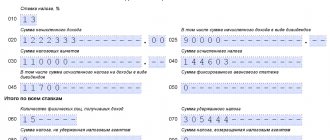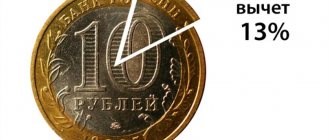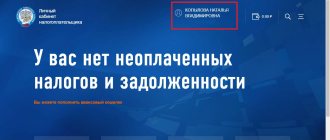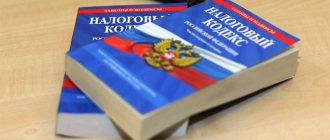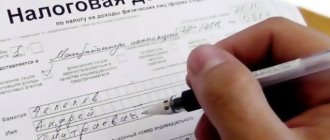When can you receive a social tax deduction from the state, and can an individual entrepreneur qualify for payments? Details on how the deduction is calculated, as well as instructions for filling out documents for receipt, are in the article below.
According to the law
Russian legislation gives the following definition of a social tax deduction: this is the amount by which a taxpayer can reduce the amount of his income subject to personal income tax, spent on his social needs: treatment, study, non-state pension provision, as well as for charitable purposes.
The requirements of the law and the conditions for receipt are specified in Article 219 of the second part of the Tax Code of the Russian Federation, adopted on August 5, 2000 (Federal Law No. 117), as amended on August 3, 2021, amendments and additions to which came into force on September 4, 2021.
The law allows only individuals who are citizens of Russia to receive a social tax deduction who pay income tax on time - personal income tax: 13% of wages received. It is from these 13%, already transferred by the individual’s employer to the state budget, that a tax deduction is paid to the taxpayer. In fact, first a citizen of our country must pay a tax to the state, and then the state will return part of this money to him - in the amount of 13% of the funds spent on study, treatment, non-state pension insurance or charity.
For example, if an individual earned 200,000 rubles a year and paid a personal income tax of 26,000 rubles on this amount, and then spent 300,000 rubles on treatment, he will be able to receive payments for a maximum of the same 26,000 rubles, although 13% of expenses for treatment is 39,000.
A prerequisite for receiving a social tax deduction is the status of a tax resident. This means that an individual must stay in Russia for at least 183 days for 12 consecutive months. This norm is spelled out in Articles 224 and 207 of the Tax Code.
Are social tax deductions available to individual entrepreneurs?
Individual entrepreneurs can apply for such benefits only if they pay taxes to the state according to the general taxation system or have income that is subject to personal income tax. This right is confirmed by the Letter of the Ministry of Finance of Russia dated November 19, 2015, number 03-04-05/66945 .
When working on the general taxation system or paying taxes on personal income, an individual entrepreneur can also count on property tax payments when purchasing a home.
If an individual entrepreneur chooses the taxation system UTII (single tax on imputed income), simplified, unified agricultural tax, patent, he is not entitled to social tax deductions, because in this situation the individual entrepreneur is exempt from paying personal income tax.
Tax system
The tax and fee system is a certain set of basic elements that determine this type of mandatory payments. It includes the definition:
- taxes;
- payers;
- objects;
- legislative acts;
- tax elements.
The entire set of fees is divided into groups depending on various reasons. So, they can be (depending on the level of budget revenue):
Types of social tax deductions.
Depending on the object:
Depending on the subject:
- from citizens;
- from law firms and individual entrepreneurs.
Depending on the collection procedure:
The subjects of legal relations are:
- payers – individuals, organizations and businesses;
- the state – as the main recipient of funds;
- tax departments - as the main regulatory body acting on behalf of the state.
The latter are accountable to the main branch of the Federal Tax Service, the activities of which, in turn, depend on the Ministry of Finance.
The Tax Code is the main collection of laws in this area.
All actions of participants, their rights and obligations are contained in the following legislative acts:
- constitution;
- Tax code;
- Presidential Decrees;
- Government Decrees;
- Orders of the Federal Tax Service;
- other legal acts.
In addition to compliance with the laws, for the normal functioning of the system it is necessary to ensure the presence of basic features: legality, proportionality, equality, legality and others.
What can you get a social tax deduction for?
Article 219 of the Tax Code of the Russian Federation clearly states for which expenses the right of an individual to receive a social tax deduction applies.
- Expenses for tuition: your own - in correspondence, full-time, distance learning; children, brothers and sisters, wards - only in person. If you plan to receive a social deduction for training not yourself, but another person, he must be no more than 24 years old. If funds from which an individual, by law, is not required to pay personal income tax, for example, maternity capital, were used to pay for studies, no deduction is allowed.
- Treatment costs – for yourself and for children under 18 years of age, parents or spouse.
- Expenses for paying contributions to non-state pension funds.
- Costs of voluntary life and health insurance if an insurance policy with a validity period of at least five years is purchased.
- Endowment life insurance, in which so-called long-term deposits are created - “airbags”, with the help of which a citizen can create additional protection for himself in old age.
- Contributions to the labor part of the pension. In this case, the taxpayer independently pays contributions to the pension fund in excess of what the employer pays for him in the funded part.
- Charity. As charity, the costs of which give the right to receive a deduction, the law names assistance to the development of science and culture, educational institutions and preschool education, and medical institutions; religious organizations. In this case, the amount of the social fiscal deduction cannot be more than 25% of the taxpayer’s income for the reporting period (year). Another important point: if the deduction in this case is not used in full, the balance cannot be transferred to the next year, according to Article 219 of the Tax Code, paragraph 1.
What does the law say?
According to the law, during the work of an individual, a certain income tax is calculated and collected from his salary, which is then sent to the state budget. Also, one of the articles of the Tax Code of the Russian Federation provides information about the so-called tax agents. This is the name given to representatives of the law who are involved in the assessment, collection and transfer of tax funds to the state budget.
Based on their powers, tax agents have the right to calculate the deduction of an individual and provide him with appropriate compensation. It is necessary to take into account that not all expenses of a citizen are counted. Only a certain part of the funds, the volume of which is equal to the amount of taxes, can be paid as compensation to an employee of the organization.
Excerpt from Article 226 of the Tax Code of the Russian Federation
Important ! Additionally, it can be noted that the tax agent has the right to provide material compensation to its own employee. And at the same time, the amount of compensation will be calculated on the basis of the funds received by the employee, specified in the employment contract.
Maximum amount of social tax deduction
The amount per year cannot exceed the amount of personal income tax paid by the taxpayer, that is, 13% of the amount of his income for the past year.
The law determines the maximum amount of expenses on the basis of which calculations can be made.
- For your own training – 120 thousand rubles from the income received for the year. This means that the deduction for the year can be no more than 15,600 rubles (120,000 rubles * 13% = 15,600 rubles). For the education of children, the amount for compensation is less - 50,000 rubles for one, that is, the amount of the deduction will be 6,500 rubles. Moreover, you can receive payments for yourself and for your child in one reporting period.
- For treatment (your own, your children’s, your parents’, your spouse’s) – 120 thousand rubles. If medical care is expensive, there is no limit on the taxable base for deduction.
- Contributions to the labor part of the pension - up to 120 thousand rubles.
- Contributions to non-state pension funds and long-term life and health insurance are also no more than 120 thousand rubles per year.
- For charitable donations, the deduction amount is not limited to a certain amount, but it is regulated by the taxpayer’s share of income - no more than his annual quarter.
Let's give an example of calculations. For example, citizen A. earned 1,200,000 rubles in a year. And during this same time, he spent 70 thousand rubles on his own education, and he paid a total of 105 thousand rubles for the education of his two children. Another 25 thousand rubles were spent on treatment. He donated 50 thousand to a medical fund.
In total, it turns out that the amount by which the taxable base of his annual income can be reduced was 245 thousand rubles: 100 thousand - for the education of two children (50 thousand for each), 70 thousand - for his studies, 25 thousand - for medical services, and another 50 thousand - for charity. Multiplying 245 thousand rubles by 13%, we get the amount that citizen A. has the right to return from the personal income tax paid - 31,800 rubles.
Medical services and medicines that are subject to social tax deduction
Codes for medical services, for which the law gives the right to receive a tax deduction, are given in Article 219 of the Tax Code of the Russian Federation, in subparagraph 3, paragraph 4. This code must be indicated in the certificate indicating payment for medical services. If the services are ordinary, code “01” is written, if expensive – “02”.
A complete list of medical services, payment for which involves receiving such payments, can be found in the Decree of the Government of the Russian Federation of March 19, 2007. This document provides a list of services, as well as expensive types of treatment and medications, the costs of which are accepted to determine the social tax deduction.
A tax refund, for example, is provided for the purchase of anesthesia, narcotic and non-narcotic painkillers, antihistamines, drugs for the treatment of alcohol and drug addiction, antifungal drugs, vaccines and hormonal agents, serums and vitamins, and so on.
The same Resolution provides a list of types of expensive medical care provided in Russia, for which the deduction is calculated based on the amounts actually spent on
- surgical operations in the treatment of respiratory organs, circulatory system, developmental defects, eyes, nervous system, digestion and so on;
- surgeries for endoprosthetics, reconstruction and tissue restoration;
- organ transplantation and prosthetic implantation;
- plastic and reconstructive surgeries;
- for therapeutic treatment of malignant diseases, hereditary and chromosomal disorders, myasthenia gravis and polyneuropathies; connective tissue diseases;
- complex treatment of burn injuries;
- treatment of certain forms of infertility using the IVF method;
- nursing premature babies;
- combined treatment of pathologies, including complications of pregnancy and childbirth;
- and so on.
What are expenses that cannot be documented?
There is a cost standard that provides for the payment of a deduction even if the costs cannot be confirmed at the documentary level. Such expenses include the creation of:
- literary works. This can be not only books. This also includes scripts, plays, etc.;
- graphic or artistic works, as well as photographs or works of design and architecture;
- sculptures, decorative paintings, objects of applied art;
- audiovisual works, which include films;
- musical works;
- scientific developments.
Some expenses cannot be confirmed at the documentary level, but deductions for them are still provided
Important ! This list also includes the execution of existing works or the development of various inventions.
It is worth noting that expenses that can be documented are excluded from this list.
Required documents to fill out and submit
Since a fiscal deduction, as follows from its definition, is calculated from the amount of taxes paid, you will need to provide the tax office with complete information about your income. On this basis, the fiscal authorities will calculate the amount of tax. And the calculation of payments will be based on it.
Data on income received is submitted to the Federal Tax Service in the form of an income declaration in Form 3 of personal income tax . And to fill it out, you need a certificate in form 2-NDFL, which indicates how much taxes you paid on your salary for a certain reporting period. For filing an income tax return, this time is one calendar year.
According to the law, the employer must submit data on taxes paid to the Federal Tax Service, and do this no later than a specific deadline. In 2021, this had to be done before April 1. And the income declaration in form 3-NDFL had to be submitted before April 3 by individuals, and by May 3 by individual entrepreneurs.
In addition, you will need to provide the fiscal authorities with
- documents confirming payment for services: receipts, checks, bank statements, payment orders and others;
- contracts for the provision of services, as well as agreements on donations made and acts of acceptance and transfer (if we are talking about charity);
- certificates from the organization providing the services, indicating that payment for the services was made in a certain amount;
- documents that confirm the status of the organization where the taxpayer received services for training, treatment, insurance, or a charitable organization. You will need copies of licenses for the right to conduct certain activities, constituent documents, budget estimates, and so on.
How to fill out an income tax return?
There are several ways to do this.
- The first is by hand on paper. To do this, you can take the tax return form from the tax office or print it out and then fill out all the fields. This is the most difficult option, since you need to know exactly which sheets need to be applied in a particular situation. If you make a mistake, the tax authorities will not accept the application.
- The second is to use a special program that can be downloaded from the tax office website. To do this, you will need a computer with Windows software installed on it.
- The third option is to register on the Federal Tax Service website, open your “Personal Account” there, and fill out the declaration directly there. According to the experience of those who have used this path more than once, it is the simplest and most reliable.
Obtaining a password for your “Personal Account” on the Federal Tax Service website
First, you will need to open the taxpayer’s “Personal Account” on the website of the Federal Tax Service. A password is required for this.
- You can get it at any tax office in Russia by presenting your passport and TIN certificate (if you go to the office at your place of registration, you don’t need to present the TIN). When you come to the Federal Tax Service, you will need to take a coupon from the electronic terminal: it should indicate the type. After a service employee registers you, you will receive a printed login and password for your personal account on the Federal Tax Service website. This procedure requires little time.
- Another option is to use a qualified electronic signature - you will need to purchase it.
- Another way is to use an account on the government services portal.
Instructions for filling out personal income tax declaration 3 on the Federal Tax Service website
- First step . If you decide to choose the first method - get a password from the inspectorate, the next step is to go to your “Personal Account”. When you visit it for the first time, the system will prompt you to change your password: this must be done within a month after the original password is received from the Federal Tax Service, otherwise you will have to go get a new one. Next, follow the system instructions.
By going to the “Personal Account” tab “Income Tax and Insurance Contributions”, you need to create a qualified electronic signature. To do this, install a special program on your personal computer or generate a signature on the fiscal service server.
- The second step is preparing documents.
- Firstly, certificates in form 2-NDFL for the previous year. This information should be displayed in the “Taxpayer’s Personal Account” automatically - after the employer has submitted the relevant data to the regulatory authorities. If he has not done this yet, he will have to obtain a certificate from the accounting department of his enterprise.
- Secondly, an agreement for the provision of services and a copy of it, for example, with a medical clinic, as well as checks and a certificate stating that you paid money for treatment , and a copy of the license of the medical institution. You will first have to fill out an application addressed to the management of the clinic in order to receive a certificate and a copy of the license, which must be certified by the director of the company. To do this, the clinic will ask you to show receipts. It may take several days or weeks to obtain the necessary documents.
- The third step is filling out an income statement, as well as an application for a personal income tax refund. For this purpose, there is a special section in the “Personal Account” - “Tax on personal income and insurance premiums”. Here you need to find the column “Fill out/send the declaration online” and then go to the “Fill out a new declaration” tab.
Supporting documents
The list of documents is not established by the legislation of the Russian Federation.
To confirm your right to the tax deduction in question, you can submit:
- payment documents: receipts for receipt orders, payment orders, bank account statements, etc.;
- contracts (agreements) for donations, for the provision of charitable assistance, etc. In addition, as an annex to the agreement there must be an act of acceptance and transfer of the donation;
- documents confirming the status of the recipient organization and the purpose of the donation (for example, a copy of the constituent documents, a copy of the budget estimate, a copy of the license, in the absence of which it is impossible to carry out a particular activity);
- certificate of income in form 2-NDFL at the end of the tax period in which charitable expenses were incurred. The certificate should be obtained from the tax agent(s) from whom the income taxed at a rate of 13% was received.
Deadlines for receiving tax deductions
The law gives the tax service quite a lot of time so that its employees can check whether you filled out your income tax return correctly. The period for such a desk audit is up to three months.
Inspectors are not required to tell the taxpayer when an audit begins and ends. During the verification process, a Federal Tax Service specialist may call with a request to provide the original documents submitted to calculate the deduction.
You can find out at what stage the verification is at in your “Personal Account” in the section where the declaration was filled out. There is an item “3-NDFL verification status”.
When the audit is completed, the tax service must transfer the money within the next month.
What to do after filing a return?
The submitted 3-NDFL declaration along with the documents goes to the reporting reception department, whose specialists transfer it to the desk control department.
Within 3 months from the date of submission of the form, office inspectors have the right to verify the accuracy of the data shown. Based on the results of the inspection, the inspector makes a decision to approve the deduction or refuse due to any violations or errors. If the inspector identifies violations, an inspection report will be drawn up, a copy of which will be given to the individual for review and preparation of arguments in his defense.
If there are no violations or complaints, the person draws up an application for a deduction indicating the details for transferring the amount or for reducing the tax base at the source of the main income. No later than a month after receiving the application, the tax authority will ensure the receipt of funds to the specified account or card number.
Statute of limitations for tax refunds under 3-NDFL
The law allows filing an application with the tax office to receive this type of payment within three calendar years after the taxpayer has incurred the expenses specified in Article 219 of the Tax Code of the Russian Federation. This means that, for example, if money for education, treatment, non-state pension, charity, life and health insurance was spent from 2021 to 2021, you can apply for a personal income tax refund in 2021.
This also makes it possible to spread the payment amount over several years. For example, if a citizen with an annual income of 1 million rubles paid 240 thousand rubles at a time for her education, in the next reporting year she can receive a deduction only from 120 thousand, that is, 15,600 rubles. However, after another year, she can use her right to receive payments for the second part of the tuition fee - and return another 15,600 rubles.
general information
Some expenses incurred by the taxpayer during the reporting period can be identified and reimbursed by submitting a petition to the tax office to reduce the amount of the final fee.
One of these groups of costs consists of social deductions processed with the participation of a tax agent. When issuing a deduction, the Federal Tax Service reduces the amount of income subject to tax or refunds the amount previously paid.
Income tax remitted for employees is usually fully calculated and remitted by the employer himself. Any person who has the right to attract personnel can act in this capacity:
- IP;
- entity;
- notary.
Conditions of registration
There are a number of conditions regarding the registration of deductions:
- Not all tax is refundable, but part of the amount paid. It depends on the amount of the fee paid;
- Social benefits can only be obtained for a certain group of expenses;
- To receive a refund, you must first prepare and submit a declaration for the reporting year, attaching a number of accompanying documents to it.
Important! The maximum possible amount that can be returned from social payments is 120,000 rubles per year.
Do you need expert advice on this issue? Describe your problem and our lawyers will contact you as soon as possible.
Main types
Social deductions can be divided into the following groups, based on the expenses incurred by the payer:
- for charity;
- for tuition fees;
- to purchase medicines and receive treatment;
- for voluntary replenishment of pension savings;
- for undergoing an independent assessment of their qualifications for compliance with qualification requirements.
The costs of life and health insurance are also taken into account, but only if such an agreement is concluded at one’s own discretion. The insurance agreement itself must be valid for at least 5 years. If the tax agent himself carries out this operation (for example, taking out car insurance), such expenses are not counted.
Legal grounds
The procedure is regulated in Article 219 of the Tax Code. It listed the reasons for receiving a deduction, and also stipulated the agent’s obligation to provide the citizen with all options for reimbursement of the funds paid.
Article 78 of the Tax Code specifies the deadlines for submitting the declaration and sending a request for a refund.
Attention! Starting from 2021, an application for social benefits must be sent through the employer. However, it is worth noting that the employer does not provide social deductions for donation amounts and for the costs of undergoing an independent assessment of one’s qualifications. This is done by the taxpayer himself by submitting a 3-NDFL declaration with supporting documents attached to the Federal Tax Service at the place of registration of the taxpayer at the end of the tax period.
Differences between social, standard and property tax deductions
Social tax is one of the types of tax deductions that are provided to Russian citizens. In addition, there are standard and property deductions.
What all three options have in common is that they can be received by individuals and individual entrepreneurs who pay personal income tax.
- The difference between standard and social deductions is the fixed amount of the former. In 2021, it is minus 500, 1400, 3000, 6000, 12000 rubles from taxable income. Article 218 of the Tax Code defines two types of such payments - for the taxpayer himself and for his children. The law states who exactly has the right to such deductions, for example, parents of disabled children.
- Property tax deductions are described in Article 220 of the Tax Code. They are valid for the sale of an apartment or house, vehicles, shares, for the purchase of housing on a mortgage and on credit, and for the construction of housing. For example, by purchasing an apartment or concluding an agreement for shared construction, you can get back from 2 million rubles paid for the apartment to 260 thousand.
nalogovyy_vychet.jpg
Current legislation provides the opportunity to return personal income tax paid through a deduction from a tax agent, whose role is played by the employer. Let's find out how to exercise this right.
Deductions for personal income tax are provided in various situations - when purchasing housing and obtaining a mortgage (property), training, treatment (social), services provided under GPC agreements, for example, when receiving fees for the creation of literary, sculptural or other works (professional). Even the presence of children makes it possible to reduce the tax base for personal income tax by issuing a standard deduction upon application to the employer.
When do you need the help of a specialist to fill out a declaration?
It is not difficult to fill out a declaration on the website of the fiscal service yourself, if it is simple and does not require taking into account additional cash receipts, property and standard deductions, and other points. In such cases, it will be more difficult to cope with the task - it is better to attract a specialist who is well versed in accounting and knows what data to enter in which columns in each specific case.
Of course, you will have to pay for the service, but it is more profitable than filling out a declaration with errors, and then, at the end of the desk audit, discovering that this was the reason for the refusal of payments. This is especially important when large sums are involved.
What does registration include?
The process of registering a deduction initially requires the citizen to prepare the appropriate documentation. When all the papers have been prepared, the individual must write an application addressed to the tax office or manager to receive compensation. The Letter from the Federal Tax Service provides the form and content of this application.
Among other things, the application contains a table that will also need to be filled out. In this table, you must select the type of deduction and amount, as well as indicate the name of the employer or tax agent and his details. When the application is completed, it, along with the rest of the papers, must be submitted to the tax office.
To receive a tax deduction, you must complete an application
This is followed by a check of the papers provided by the citizen by tax inspectors. It continues for a month, after which the applicant receives a notification containing the answer - whether the individual can or cannot receive compensation. If the answer is positive, the corresponding certificate is sent to the accounting department of the organization in which the applicant works. Once it is at the disposal of the company, the subordinate will receive monthly income in the original amount without deducting the tax previously paid.
Tax deduction calculation
To more accurately understand how tax is paid by an individual, as well as to calculate its possible amount, it is worth considering an illustrative example.
Let the amount of personal income tax withheld from the income of a company employee be:
(4000 rub. – 4000 rub.* 20%)*13% = 416 rub.
As a result, the salary that an employee can receive in person is equal to:
4000 rub. – 416 rub. = 3584 rub.
Employees are paid after taxes are deducted.
All calculations are detailed in the accounting records. For example, it is worth noting that:
- 4000 rub. – employee remuneration under the contract;
- 416 rub. – income tax of the subordinate;
- 3584 rub. – funds that the employee will receive under the contract.
As a result, the income tax from the above calculation is transferred to the state budget. And in case of receiving a tax deduction, it is this amount that will be paid additionally when the employee receives wages.
Income tax is transferred to the state budget

